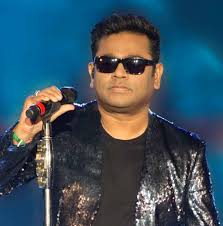Introduction to AR Rahman
Background and Early Musical Influences
Notable Achievements and Awards
AR Rahman, also known as A. R. Rahman or Allah Rakha Rahman, is a globally acclaimed music composer and producer hailing from India. With a career spanning over three decades, Rahman has redefined the sound of Indian music and captivated audiences worldwide with his innovative compositions. Drawing inspiration from a diverse range of musical traditions, Rahman seamlessly blends elements of Indian classical music with Western influences, creating a unique sonic tapestry that transcends cultural boundaries. In this article, we delve into the top instruments that have played a pivotal role in shaping AR Rahman’s distinctive sound and explore their profound impact on the world of music.
Introduction to AR Rahman
A.R. Rahman, born A. S. Dileep Kumar, is a legendary Indian composer, singer, and music producer known for revolutionizing the Indian music industry. His innovative sound has garnered global recognition, making him a leading figure in contemporary music.
Background and Early Musical Influences
Growing up in Chennai, Rahman was exposed to a rich tapestry of musical traditions, including Carnatic music and Indian classical music. His early exposure to a variety of genres laid the foundation for his diverse and eclectic musical style.
Notable Achievements and Awards
Rahman’s illustrious career has been marked by numerous accolades, including two Academy Awards, two Grammy Awards, a BAFTA Award, and several National Film Awards in India. His groundbreaking work has not only earned him critical acclaim but has also touched the hearts of music lovers worldwide.
The Influence of Indian Classical Instruments in AR Rahman’s Music
AR Rahman’s music is deeply rooted in the rich heritage of Indian classical instruments, which play a pivotal role in shaping his distinctive sound.
Exploration of Tabla, Sitar, and Flute in Rahman’s Compositions
Rahman seamlessly integrates traditional Indian instruments like the tabla, sitar, and flute into his compositions, adding a unique and authentic flavor to his soundscapes. The rhythmic patterns of the tabla, the melodic intricacies of the sitar, and the soulful resonance of the flute bring a timeless quality to Rahman’s music.
Fusion of Carnatic and Hindustani Elements in his Sound
Drawing from both Carnatic and Hindustani music traditions, Rahman skillfully blends the intricate rhythms and vibrant melodies of these styles in his compositions. This fusion of classical elements creates a harmonious blend that transcends cultural boundaries and resonates with audiences across the globe.
The Evolution of Technology in AR Rahman’s Instrumentation
Rahman’s innovative approach to music production is characterized by his embrace of cutting-edge technology, which has played a significant role in shaping his musical landscape.
Adoption of Digital Synthesizers and Sampling Techniques
Rahman was one of the pioneers in India to embrace digital synthesizers and sampling techniques, revolutionizing the way music was created and produced. By harnessing the power of technology, Rahman expanded the possibilities of sound experimentation and paved the way for a new era in music production.
Integration of Electronic Music Production in Rahman’s Work
Incorporating electronic music production elements into his work, Rahman has created a dynamic and contemporary sound that pushes boundaries and challenges traditional norms. His mastery of electronic music production has added a modern flair to his compositions, setting him apart as a visionary in the music industry.
Fusion of Western and Eastern Instruments in AR Rahman’s Sound
Rahman’s music transcends cultural barriers by seamlessly blending Western and Eastern musical elements, creating a rich and diverse sonic palette that is uniquely his own.
Blend of Guitars, Drums, and Keyboards with Traditional Indian Instruments
By fusing Western instruments like guitars, drums, and keyboards with traditional Indian instruments, Rahman creates a dynamic fusion of sounds that bridges the gap between different musical traditions. The juxtaposition of these elements adds layers of complexity and depth to his music, captivating listeners with its innovative approach.
Experimentation with Orchestral Arrangements and World Music Influences
Rahman’s experimentation with orchestral arrangements and world music influences further showcases his versatility as a composer. By infusing his compositions with diverse cultural influences, Rahman creates a global sound that resonates with audiences worldwide, transcending language and cultural barriers.
Impact of AR Rahman’s Unique Instrumentation on Global Music Trends
Popularization of World Music Fusion Genres
AR Rahman’s distinctive use of instruments from various cultures has played a key role in popularizing world music fusion genres. By blending traditional Indian instruments with Western elements, he has created a unique sound that resonates with audiences worldwide.
Influence on Contemporary Film Scores and Soundtracks
AR Rahman’s innovative approach to incorporating diverse instruments in his film scores has had a significant impact on contemporary cinema. His use of unconventional sounds has set new standards for creating immersive and emotive soundtracks, influencing filmmakers and composers globally.
Analysis of AR Rahman’s Top 5 Instruments and Their Signature Sounds
Detailing the Characteristics of Instruments like the Flute and Tabla in Rahman’s Music
AR Rahman’s mastery of instruments like the flute and tabla brings a distinct character to his compositions. The ethereal melodies of the flute and the rhythmic complexity of the tabla are often featured prominently in his music, adding depth and emotion to his soundscapes.
Comparative Analysis of Usage and Impact of Each Instrument
Each of AR Rahman’s top 5 instruments, including the piano, guitar, and synthesizer, contributes uniquely to his sonic palette. From the haunting echoes of the piano to the soaring riffs of the guitar, each instrument leaves its mark on his music, showcasing his versatility and creativity.
Collaborations and Innovations: AR Rahman’s Instrumental Experimentation
Creative Partnerships with International Musicians and Producers
AR Rahman’s collaborations with international musicians and producers have led to groundbreaking musical innovations. By merging diverse musical perspectives and experimenting with new sounds, he continues to push the boundaries of instrumental exploration in the global music scene.
Exploration of New Sounds and Instrumental Combinations in Collaborative Projects
In his collaborative projects, AR Rahman fearlessly explores new sounds and instrumental combinations, sparking fresh creative possibilities. By embracing experimentation and pushing beyond musical conventions, he sets a precedent for innovation and artistic growth in the industry.
Conclusion: Legacy of AR Rahman’s Instrumental Mastery
Reflection on Rahman’s Influence on Contemporary Music Production
AR Rahman’s instrumental mastery has left an indelible mark on contemporary music production, inspiring artists to push boundaries and embrace cultural diversity in their work. His legacy serves as a testament to the power of music to transcend borders and connect people across the globe.
Ongoing Impact and Future Trends in Instrumentation Inspired by AR Rahman
As musicians continue to draw inspiration from AR Rahman’s innovative use of instruments, the future of music production holds exciting possibilities. His influence will likely pave the way for new trends in instrumentation, shaping the sonic landscapes of tomorrow with his timeless artistry.








